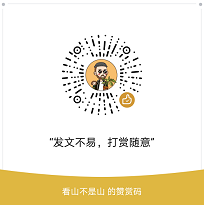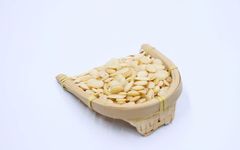Source: Shenxiyuan (ID: shenxiyuan999)
People often hope to find a single formula that can sweep away various diseases. If it can handle a hundred or eighty ailments, it would be considered a miraculous formula that has truly “broken through the circle”. In reality, are there classic formulas that can treat “a hundred diseases”? Indeed, there are, such as many formulas among the “Top Ten Famous Formulas in Traditional Chinese Medicine (TCM)” that possess this capability.Among the “Top Ten Famous Formulas in TCM”, the one closest to our era is the Xuefu Zhuyu Decoction (Blood Mansion Removing Stasis Decoction) by the Qing Dynasty physician Wang Qingren. The Xuefu Zhuyu Decoction is derived from Wang Qingren’s “Yilin Gai Cuo” and is primarily composed of the following Chinese herbs: 4 qian of Tao Ren (Peach Kernel), 3 qian each of Dang Gui (Angelica Sinensis), Sheng Di (Rehmannia), Hong Hua (Safflower), and Niu Xi (Achyranthes), 2 qian each of Zhi Qiao (Bitter Orange), Chi Shao (Red Peony), and Gan Cao (Licorice), and 1.5 qian each of Jie Geng (Platycodon) and Chuan Xiong (Ligusticum Chuanxiong), and 1 qian of Chai Hu (Bupleurum). This decoction is prepared by decocting the herbs in water, and the original dosage can be converted to modern common dosages (1 qian is approximately 3 grams). Upon closer examination of the Xuefu Zhuyu Decoction, it is found to be a combination of the Tao Hong Si Wu Decoction (Dang Gui, Shu Di, Chuan Xiong, Bai Shao, Tao Ren, Hong Hua) and Si Ni San (Zhi Qiao replacing Zhi Shi) with the addition of Jie Geng and Niu Xi. Although it is a relatively new formula, it possesses unique characteristics, linking back to the Han and Tang dynasties while also connecting to the Song and Yuan dynasties.The Tao Hong Si Wu Decoction is a classic formula with a convoluted history, originally sourced from the Yuan Dynasty’s “Yilèiyuánrǒng”, emphasized in the Ming Dynasty’s “Yujī Wēiyì”, and formally named in the Qing Dynasty’s “Yizong Jinjian”. The primary function of the Tao Hong Si Wu Decoction is to invigorate blood, dispel stasis, nourish blood, and promote qi circulation. The Si Ni San (Chai Hu, Shao Yao, Zhi Shi, Gan Cao) is passed down from the medical sage Zhang Zhongjing and primarily functions to harmonize the liver and spleen, dispel pathogenic factors, and soothe the liver while regulating the spleen. Both of these formulas are exceptional in their own right, and Wang Qingren combined them, adding a downward-moving and a guiding herb, creating the “Xuefu Zhuyu Decoction”, which caused a “sensation” in the TCM community!The Xuefu Zhuyu Decoction is established on the principle of “promoting qi and invigorating blood”, demonstrating remarkable clinical efficacy. Its high application frequency, broad usage scope, and treatment of numerous conditions showcase its excellent clinical practical value, thus earning it the title of the Top Formula for Activating Blood and Resolving Stasis. Moreover, the Xuefu Zhuyu Decoction is the only classic formula selected among the many formulas from the Ming and Qing dynasties to be included in the “Top Ten Famous Formulas in TCM”. This indicates that the Xuefu Zhuyu Decoction truly possesses a “leading role”.So, what hidden secrets lie within the composition of the Xuefu Zhuyu Decoction, which is hailed as the “Top Formula for Activating Blood and Resolving Stasis”? The conventional interpretation of the entire formula’s composition is as follows: the Tao Ren and Hong Hua serve as the monarch herbs, primarily functioning to break blood stagnation, invigorate blood, dispel stasis, and alleviate dryness and pain; the Chi Shao, Chuan Xiong, and Niu Xi serve as minister herbs, mainly functioning to invigorate blood, dispel stasis, and relieve pain; the Sheng Di, Dang Gui, Jie Geng, Zhi Qiao, and Chai Hu serve as assistant herbs, primarily nourishing blood, invigorating blood, broadening the chest, promoting qi circulation, and soothing the liver to relieve depression; and Gan Cao serves as the envoy herb, mainly harmonizing the other herbs. However, there are differing opinions, as Niu Xi and Jie Geng in the formula can also serve as guiding herbs, which may lead to new variations in the monarch-minister-assistant-envoy structure of the formula.Nevertheless, the overall combination of herbs in the Xuefu Zhuyu Decoction is indeed remarkable.Dang Gui, Shao Yao, Chuan Xiong, and Di Huang are known as the “Top Formula for Women’s Health” (Si Wu Decoction). In this formula, Shu Di is replaced with Sheng Di, and Bai Shao is replaced with Chi Shao, enhancing the ability to cool blood and invigorate blood; combined with Tao Ren and Hong Hua, this classic herb pair enhances the effects of invigorating qi and blood, dispelling stasis, unblocking meridians, and alleviating pain; while Chai Hu functions to “soothe the liver and relieve depression, and expel pathogenic factors outward”. The Zhi Shi in Si Ni San is replaced with Zhi Qiao, which is intended to slow down the speed and strength of “regulating qi, relieving depression, and dispelling heat and resolving masses”. This combination is already quite powerful, but with the addition of Jie Geng and Niu Xi as guiding herbs, it can reach all parts of the body.Jie Geng carries the medicine upward, while Niu Xi guides the blood downward, and the combination of these two herbs primarily functions to achieve “simultaneous treatment of qi and blood, and coordination of ascent and descent”.The Xuefu Zhuyu Decoction, with its complete composition, not only adheres to the physiological relationship of “when qi moves, blood moves” but also considers the pathological interaction of “when qi stagnates, blood stasis occurs”. The use of multiple blood-invigorating herbs combined with a small number of qi-regulating herbs enhances the clinical efficacy, which is not only the success of this formula but also holds practical value for clinical prescription and medication. The composition of this formula reflects the characteristics of “simultaneous regulation of qi and blood, nourishing while invigorating, and applying ascent and descent together”, and contains the scientific connotation of modern pharmacology in combined medication, fully demonstrating the profound and extensive theory of TCM herbal combinations.Although the Xuefu Zhuyu Decoction is a relatively young formula, it is undoubtedly a timeless classic. Modern pharmacological research on it is gradually deepening. Pharmacological studies have found that the Xuefu Zhuyu Decoction has various effects such as lowering blood pressure, anti-arrhythmic effects, lowering blood lipids, anti-atherosclerosis, and anti-myocardial ischemia; improving blood rheology, improving microcirculation, inhibiting platelet aggregation, and promoting hematopoiesis; anti-inflammatory, analgesic, enhancing immunity, anti-tumor, anti-fibrosis, and anti-hypoxia effects.It is not difficult to see that the Xuefu Zhuyu Decoction can indeed be applied in multiple fields and targets in clinical practice, making it a truly remarkable formula.So, what clinical conditions can the Xuefu Zhuyu Decoction be applied to? Generally speaking, it can be used for a wide range of diseases in internal medicine, surgery, urology, gynecology, otolaryngology, orthopedics, dermatology, cardiovascular system, endocrine system, digestive system, nervous system, and urogenital system, especially for various headaches, insomnia, cardiovascular and cerebrovascular diseases, and gynecological diseases, showing good clinical efficacy. Overall, the Xuefu Zhuyu Decoction has varying degrees of therapeutic effects on “blood stasis syndrome” caused by various reasons, with over 110 diseases treated, including internal, external, gynecological, pediatric, dermatological, and otolaryngological conditions, making it truly capable of “treating a hundred diseases”!The clinical efficacy of the Xuefu Zhuyu Decoction is indeed promising, but its modifications must also be approached with caution. So, how is the Xuefu Zhuyu Decoction generally modified? Generally, if there is blood stasis pain entering the meridians, one can add herbs such as Quan Xie (Scorpion), Shan Jia (Armored Earthworm), and Di Long (Earthworm) to enhance the effect of unblocking the meridians. One can also add herbs like San Leng (Sparganium), E Zhu (Curcuma), Feng Chong (Fly Larva), and Shui Zhi (Leech) to enhance the blood-breaking power; if there is severe qi stagnation, one can add herbs like Xiang Fu (Cyperus) and Qing Pi (Green Tangerine Peel) to enhance the effect of soothing the liver and regulating qi, or add Chuan Lian Zi (Toosendan) and Xuan Hu Suo (Corydalis) to enhance the effect of invigorating blood and relieving pain; if there are masses or accumulations in the chest and surrounding areas, one can consider adding Dan Shen (Salvia), Feng Chong, Shui Zhi, and Yu Jin (Curcuma) to enhance the effects of invigorating blood, breaking stasis, and resolving masses; if women experience amenorrhea or dysmenorrhea due to blood stasis, Jie Geng can be removed from the formula, and herbs like Xiang Fu, Ze Lan (Lycopus), Ma Bian Cao (Verbena), and Yi Mu Cao (Leonurus) can be added to enhance the effects of regulating qi, invigorating blood, and alleviating pain.Reflecting on the Xuefu Zhuyu Decoction, its core is blood stasis, so it is essential to recognize the basic characteristics of blood stasis in clinical practice. Generally, the characteristics of blood stasis in the Xuefu Zhuyu Decoction can be summarized in five points:First is pain, characterized by stabbing pain;Second is abnormal sensations in the chest;Third is emotional changes, such as feelings of oppression and irritability;Fourth is sleep abnormalities, such as vivid dreams, insomnia, and restlessness at night;Fifth is fever, especially “cold on the outside, heat on the inside” (also known as lantern disease).Of course, blood stasis syndrome can also be identified through tongue diagnosis, where a dark red tongue or the presence of stasis spots is an important reference indicator.In summary, the Xuefu Zhuyu Decoction, as the most representative formula for activating blood and resolving stasis, is widely used in clinical practice. Blood stasis blockage in any part of the body can pose significant health risks, hence the saying, “Once blood stasis is resolved, hundreds of diseases disappear.” The Xuefu Zhuyu Decoction is indeed an outstanding formula capable of treating a hundred diseases in modern clinical practice. If used appropriately, both physicians and patients can achieve great satisfaction!References[1] Wang Qingren. Yilin Gai Cuo [M]. Beijing: People’s Health Publishing House, 2005.[2] Lei Yan, Wang Junhui, Li Zhongwen. Overview of Experimental Research on the Composition and Modification of Xuefu Zhuyu Decoction [J]. Journal of Chinese Experimental Formulas, 2001, 7(6): 57-59.[3] Liu Min, Tang Decai. Insights into the Significance of Guiding Herbs Jie Geng and Niu Xi in the Xuefu Zhuyu Decoction [J]. Liaoning Journal of Traditional Chinese Medicine, 2010, 37(12): 2326-2327.[4] Shen Yingjun. Pharmacology of Chinese Medicine (2nd Edition) [M]. Beijing: People’s Health Publishing House, 2011.[5] Zhang Dongmei. Wang Qingren’s Timeless Famous Formula [M]. Beijing: China Medical Science and Technology Press, 2013.Related Statement
1. The scientific viewpoints are for reference only; if you feel unwell, please seek medical attention.
2. TCM emphasizes syndrome differentiation and treatment; do not blindly self-medicate.
3. All text and images are original. All rights reserved; infringement will be pursued.


Click “Read the Original” to see more content.


